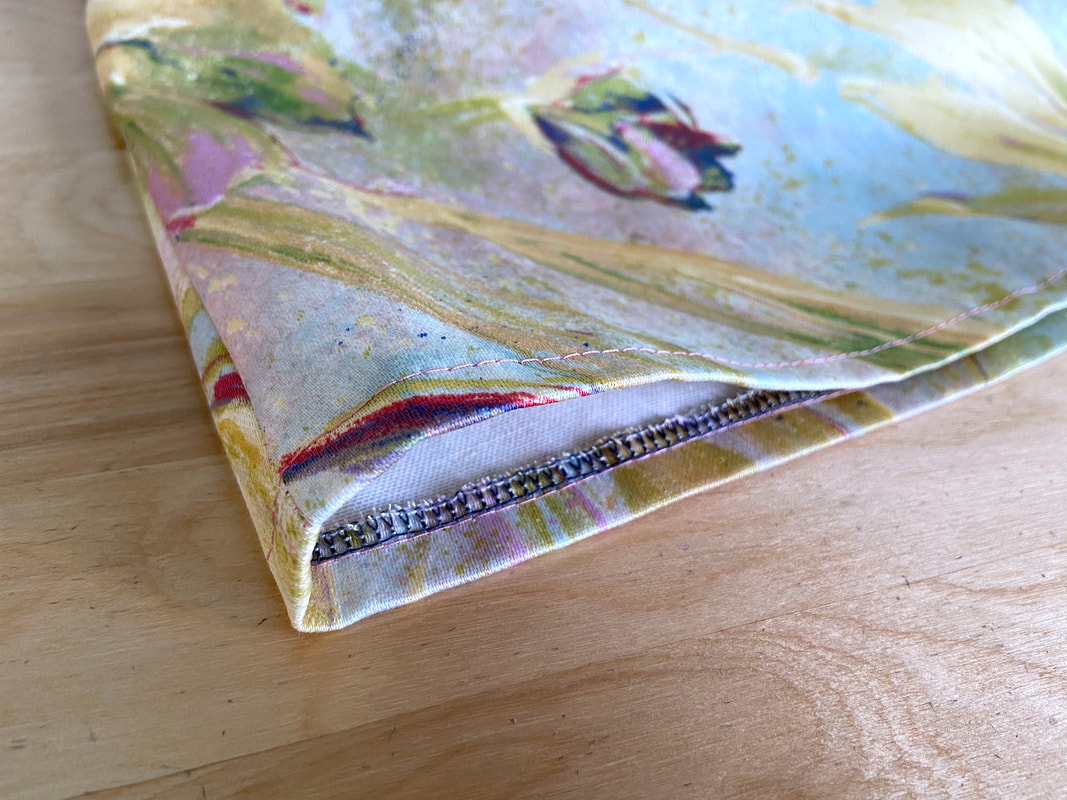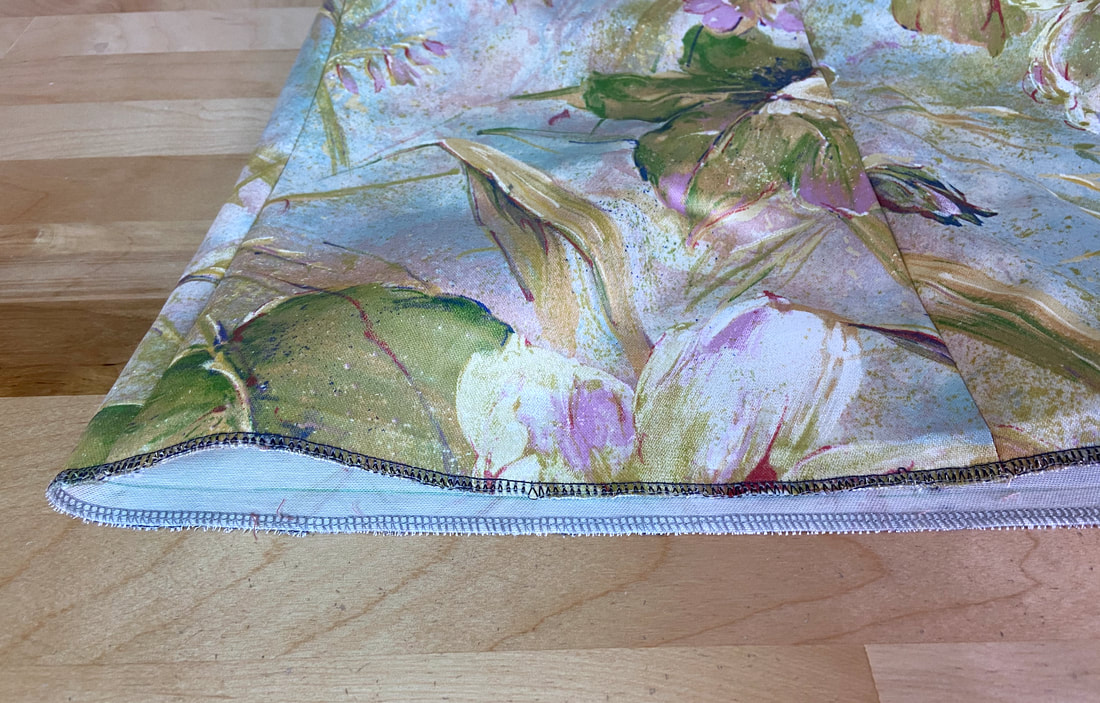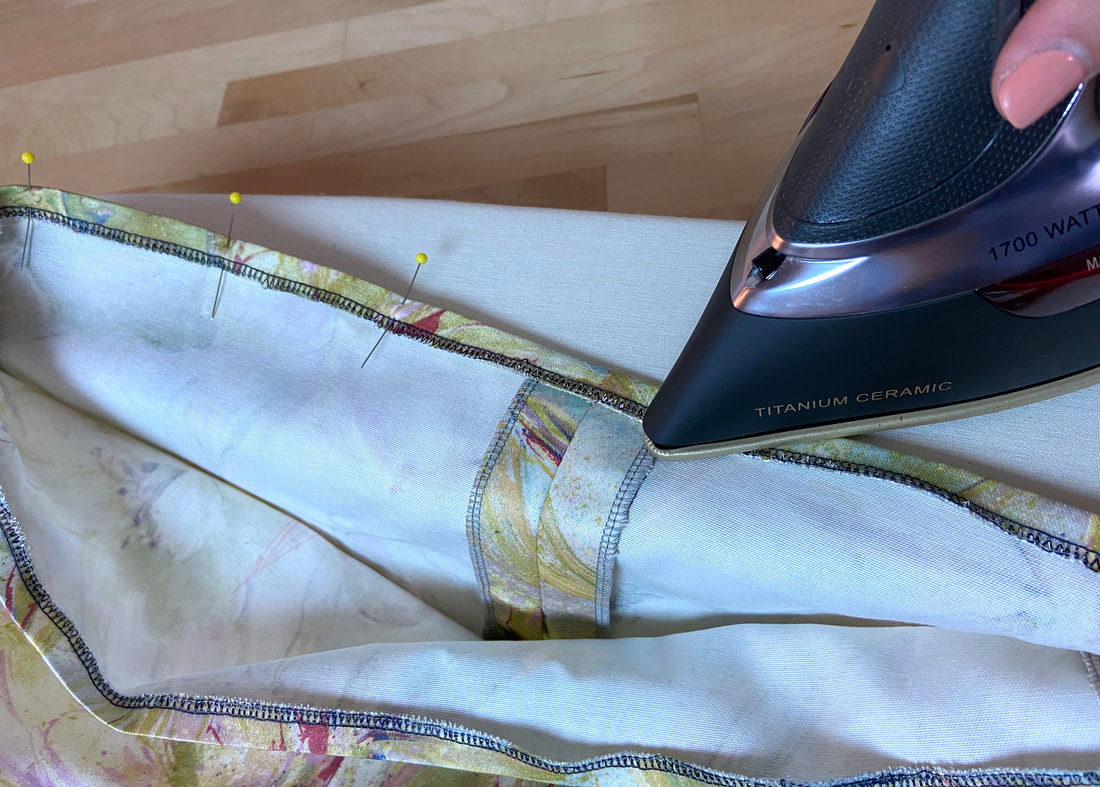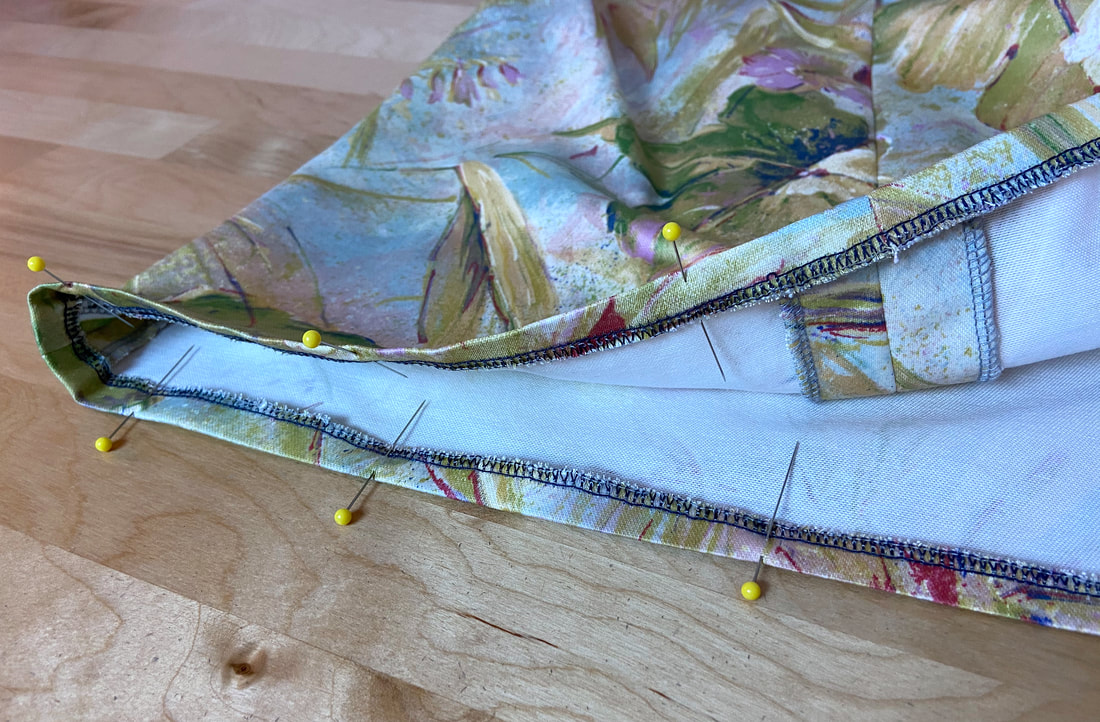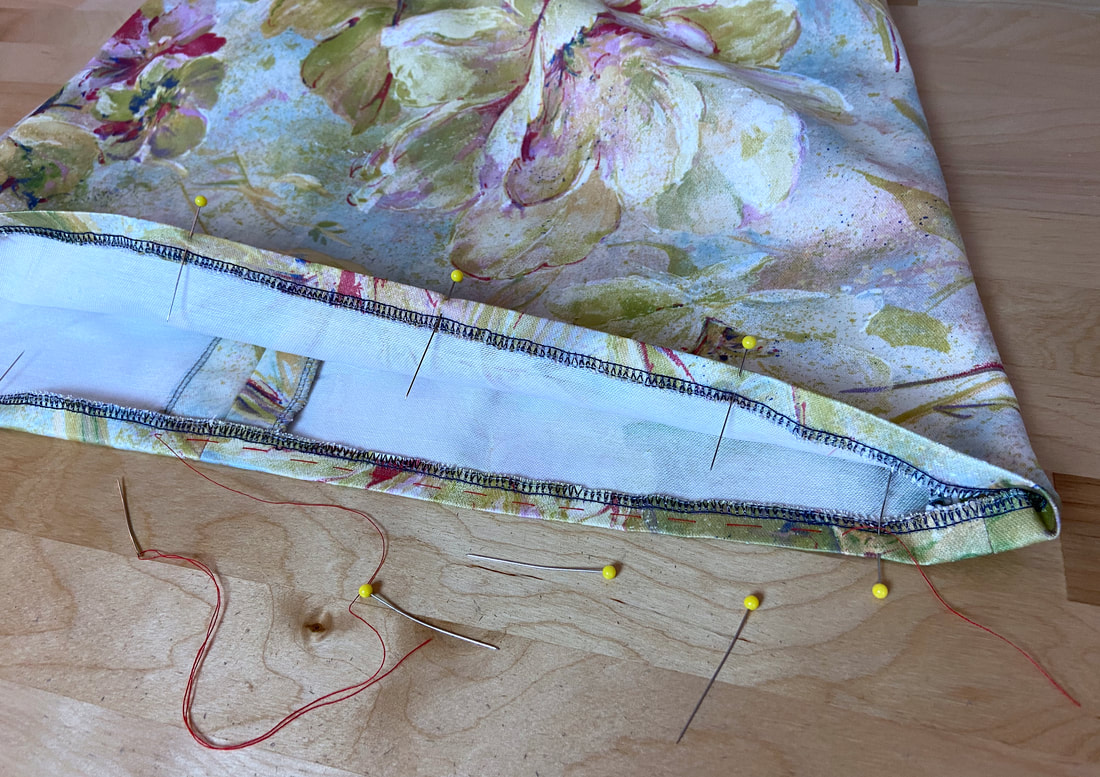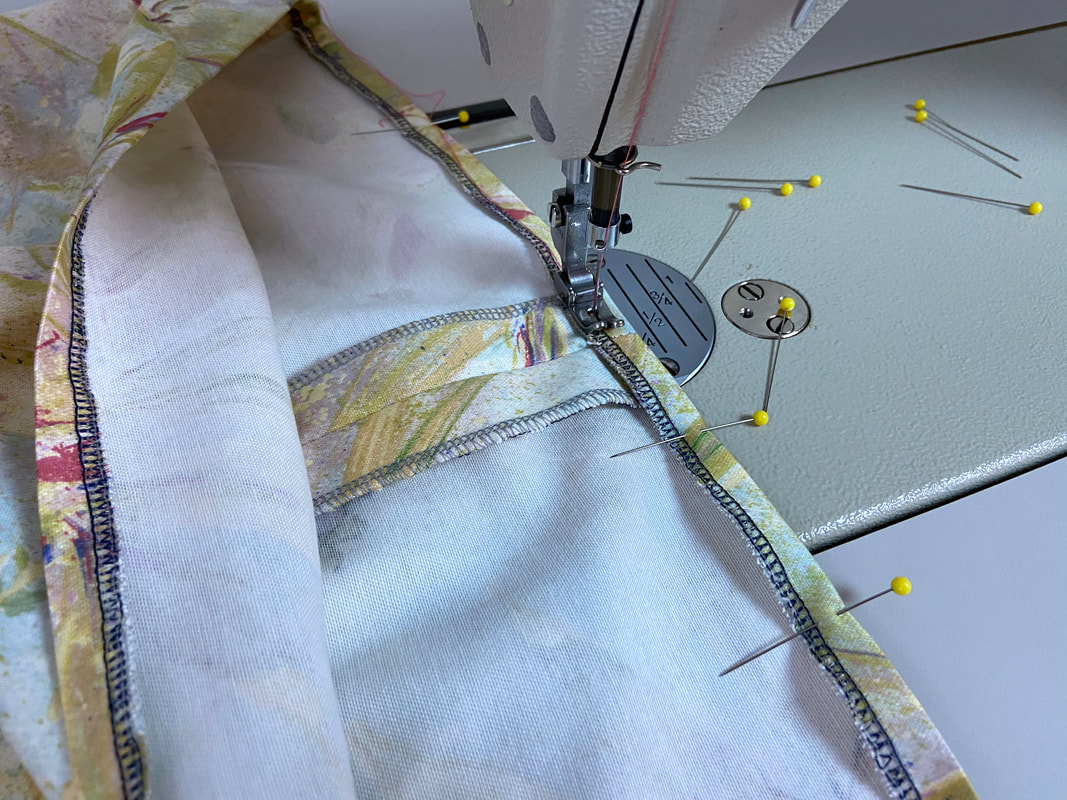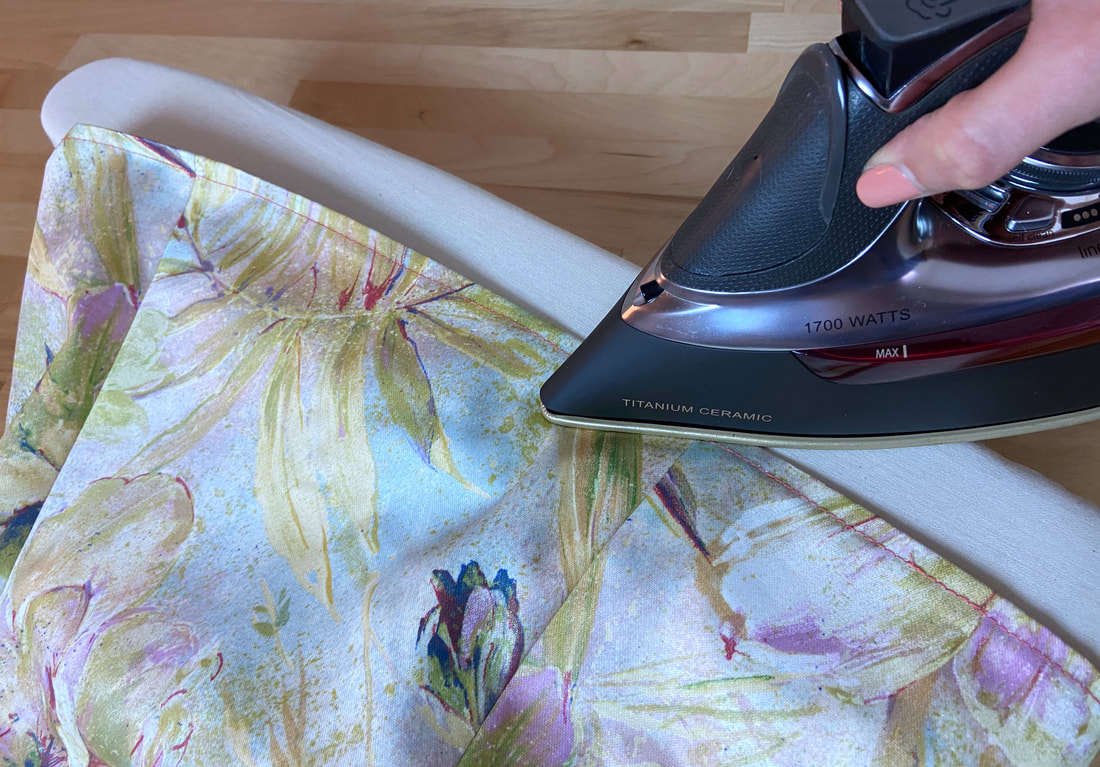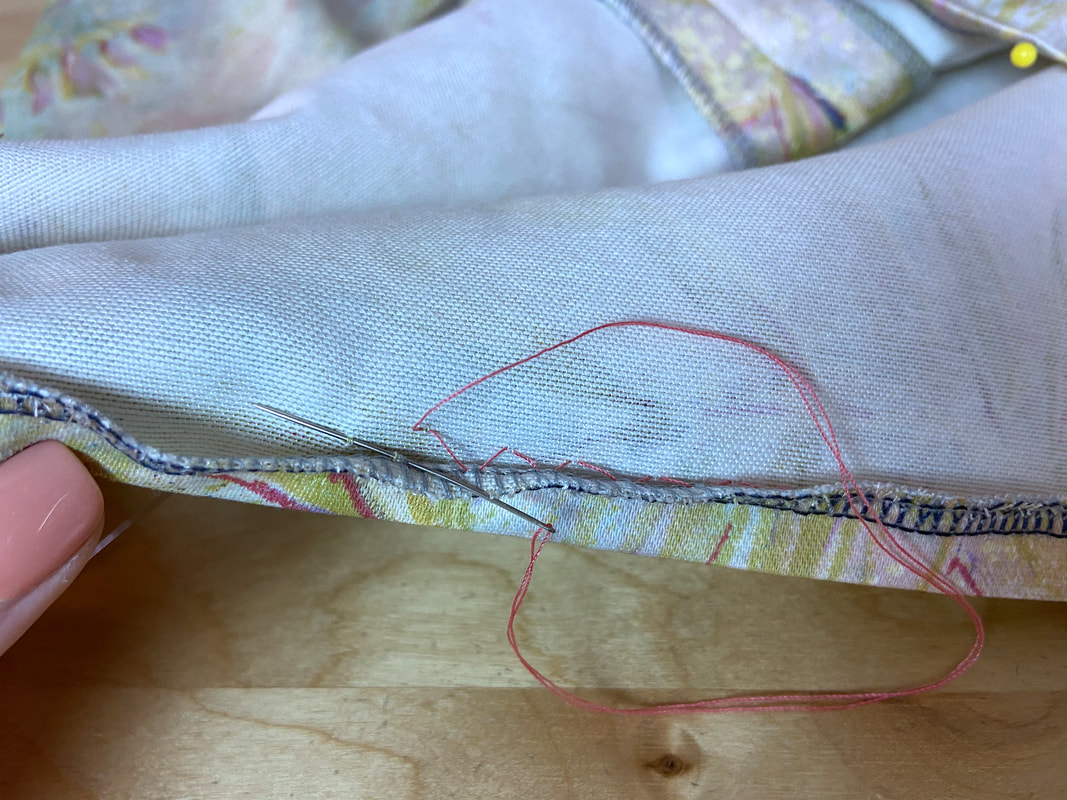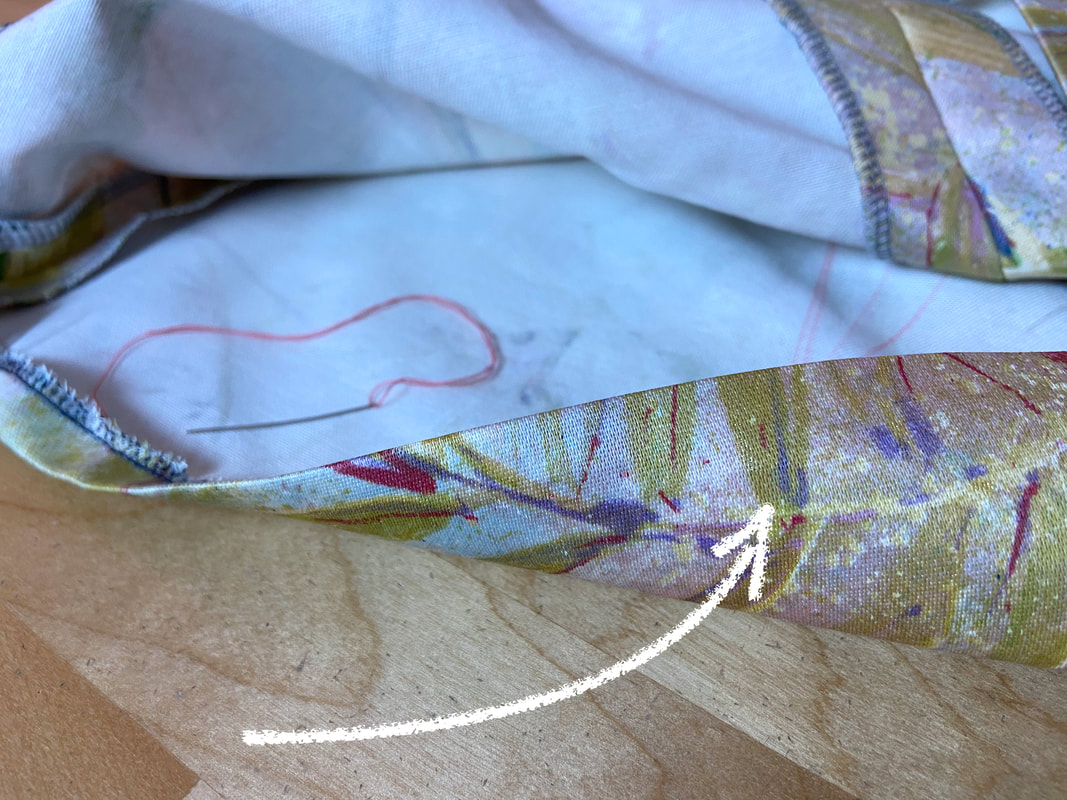Mini Tutorial: How To Sew A Single Fold Topstitched Hem Finish
In a single fold hem finish, the hem allowance is folded up towards the garment's wrong side once, and either machine-stitched (topstitched) as shown above, or hand stitched with a blind hemming application. The latter results in no visible stitching on the face of the garment.
1. Prior to folding the hem allowance, apply an overedge stitch like serging or zigzag (on your home sewing machine) to the hem's raw edge. Since this edge will be left exposed on the wrong side of the garment, encasing it will prevent fraying as well as provide a more professional, clean finish.
2. Fold the hem allowance toward the wrong side of the garment and iron as you fold to crease the hemline. Insert pins perpendicular to the edge to keep the folded layers secure during the stitching process.
To ensure that the edge is folded evenly throughout, use a gage pointer or ruler to measure the folded distance along the entire hem. It may also help to transfer the hemline directly to the wrong side of the fabric as it can be used as a guide in the folding process.
To ensure that the edge is folded evenly throughout, use a gage pointer or ruler to measure the folded distance along the entire hem. It may also help to transfer the hemline directly to the wrong side of the fabric as it can be used as a guide in the folding process.
Inserting the pins perpendicularly, with the ball point facing outward, will ensure a safe and fast machine stitching process, allowing you to comfortably remove the pins as you stitch.
If you are working with flimsy fabrics that do not take well to ironing and creasing, you may find it more comfortable to secure the folded layers with a temporary hand basting stitch. The stitch will keep the folded layers smooth and flat as they feed under the machine's presser foot. Using hand basting is especially helpful if you are a sewing beginner and not quite comfortable with your sewing machine yet.
3. To complete the single fold hem by machine, stitch along the fabric edge using the serging (or zigzag) stitch as a guide. Remove each pin as you approach it - you should never stitch directly on top of the pins as this can break your machine needle.
Stitching from the wrong side of the hem will result in a smooth, even topstitching on the application's right side- the fabric edge provides a convenient stitching guide.
Stitching from the wrong side of the hem will result in a smooth, even topstitching on the application's right side- the fabric edge provides a convenient stitching guide.
4. To complete the topstitched hem, iron the finished application, preferably in the direction the stitch was applied. Doing so will smooth out the stitch and flatten the folded layers.
5. To complete the single fold hem by hand, use a blind hemming stitch to connect the hem allowance edge to the garment layer underneath. In this instance, stitch on the inside of the fold then catch 1-2 threads from the garment surface at the top. Continue stitching leftward until the entire hem is sealed and complete.
With a blind hemming application, no stitching should be visible on face or wrong side of the hem. A hand finish results in a more elegant, high quality application.

